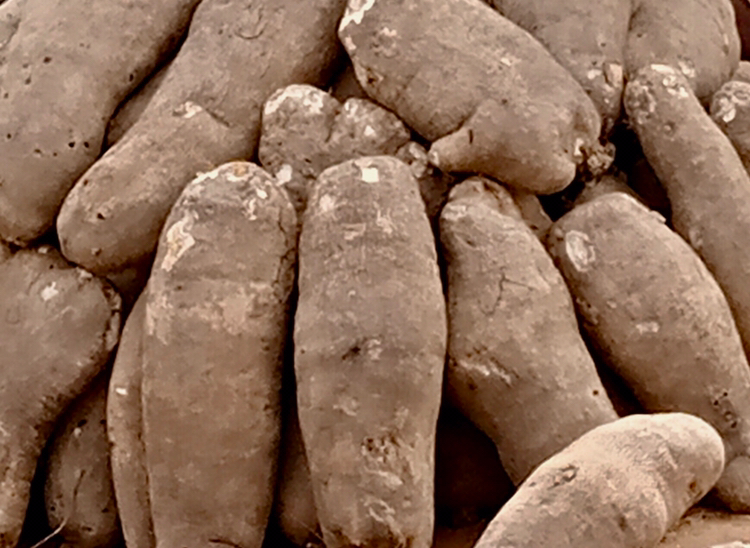
By Salisu Na’inna Dambatta
The other day the National Bureau of Statistics (NBS) while reporting the current inflation rate, indicated that despite the huge effort to boost productivity in the agriculture sector, the prices of food appreciated and contributed to the slightly over 14 per cent rise in the prices of commodities and services reckoned by the NBS.
The Nigerian Economic Summit Group (NESG), a grouping of rich and technocrat-type that lobbies government to deepen the capitalist economic system in the country, raised an alarm when they suggested that the country is likely to face s food crisis in 2020 and beyond.
One Juliana Agbo of Salaam Gateway wrongly projected in an article published in the November 8th edition of The Nation newspaper: “About 9.8 million Nigerians are expected to be in a hunger crisis or worse between November and December this year.’
Her projection was based on the Cadre Harmonise (CH) report on food security and nutrition analysis released on November 5, 2020, which says that the 9.8 million potentially hungary Nigerians will come from 16 Northern States.
And many officials in parts of the country predicted a food-doom or food insecurity in Nigeria because of the flooding that destroyed crops, especially rice, in farmlands in Jigawa, Kebbi, Kano, Bauchi and s few other states in the country in the course of the 2020 nationwide wet season. Commentators added insecurity as another problem that contributes to lower food production.
One common feature of the these analyses of the food situation in Nigeria is that, each of them was hinged on grains or cereals only, forgetting or ignoring the huge contribution being made to our national food security by roots and tubers, which cannot be excluded from the list of stables foods in the country.
To illustrate, Nigeria is the world’s largest producer of yam, a major stable food ignored in the analysis. Tilasco, a website, said Nigeria produced 49.3 million metric tonnes of it in 2016. The International Institute of Tropical Agriculture (IITA) reports that Nigeria produces 71 per cent of world’s yam output. Its contribution to our national food security has not been adequately captured by the statiscians and analysts who glossed over it in passing.
In the case of Cassava, a document in the Federal Ministry of Agriculture says Nigeria is the largest producer of the commodity in the world. It is mostly consumed internally, with an estimated 54 per cent of the population getting their energy intakes from various dishes derived from it.
“In 2017, Nigeria produced 59 million tons (of cassava), making it the world’s largest producer (approximately 20% of global production) with a 37% increase in the last decade. Nigeria exports about 3.2 million tons annually and earned a record $136 million in 2013,” a report by IITA indicates.
As for sweet potato, Dr. Udemezue Joseph Chidozie, a versatile researcher at the National Root Crops Research Institute, Umudike, said in an academic article published in May 2019 that, “Nigeria is one of the largest producers of sweet potato in sub-Saharan Africa with annual production estimated at 3.46 million tons per year. It is an important food security and early maturity crop.”
The analyses by the NBS, the NESG, the Non-Governmental Organisation and echoed by many government funtionaries at various levels also ignored the increasingly important contribution to food production in the country by the irrigation farming side of the equation.
The analysts too forgot to add that whatever food and many other goods Nigeria produces, it is shared with more than a dozen sister African countries in West Africa, Central Africa, parts of East Africa, and some add, the Sudan. That was why there was a flurry of diplomatic engagements between Nigeria and some of the countries trading with Nugeria when our land borders were partially closed to stem smuggling of rice, illicit weapons and dangerous drugs.
Beside, every source of information on the types and quantities of food crops produced in Nigeria since the 1973 drought, consistently indicate that the country is more than self-sufficient in the common stables, namely yam, Irish potatoes, millet, sorghum, cassava and cocoyam. I believe that the Nigerian Customs Service (NCS) has never published data indicating that this country has imported any of these essential commodities fro other countries.
Indeed, Nigeria exports white sorghum, millet plus sesame seeds, soya beans, white beans and hundreds of tonnes of yams. Ginger, cassava chips, sorrel flower (soborodo) and a host of other agricultural commodities. The Central Bank of Nigeria (CBN), says the export of agricultural commodities constantly yields the second largest chunk of the country’s forein exchange, beaten only by hydrocarbons.
Nigeria is succeeding in minimising food importation and increasing self-reliance because the Buhari Administration has given agriculture the attention it deserves. Several initiatives were introduced, previous ones retained, refined and blended with the current initiatives to give agriculture a big push and boost.
The combined efforts of the Federal Ministry of Agriculture and Rural Development, the Federal Ministry of Water Resources which facilitates dry season farming, and the Central Bank of Nigeria have proved to be effective in boosting food production and security in Nigeria.
Take the case of the Central Bank. The Bank embarked on the Agricultural Commodity Development Initiative (ACDI) in 2019, which isolates the value chains of ten focal commodities (rice, cotton, tomato, livestock (dairy), oil palm, cassava, cocoa, fish, maize and poultry) for targeted development.
It says, “Some of the key objectives of the ACDI are to bridge the domestic supply gaps to guarantee food self-sufficiency and to reduce the food import bill.”
The Bank also continued with the implementation of other existing developmental initiatives, such as: Anchor Borrowers’ Programme (ABP); Real Sector Support Facility using Differentiated Cash Reserve Requirement (RSSF-DCRR); Agricultural Credit Guarantee Scheme (ACGS); Commercial Agriculture Credit Scheme (CACS); Paddy Aggregation Scheme (PAS); Agri-Business/Small and Medium Enterprises Investment Scheme (AGSMEIS) and the Accelerated Agricultural Development Scheme (AADS).
The CBN also introduced the Maize Aggregation Scheme (MAS) under which feed millers, silo and warehouse operators, poultry farmers and confectionery companies have access to affordable credit.
The outcome of the multi-track strategy is the high jump in rice production, the deepening and consolidation of our self-sufficiency in the stables food production.
In essence, while prices of some food items have increased marginally it will be appropriate to acknowledge the contribution of roots and tubers in muting the rising food prices to astronomical levels. The availability and affordability of roots and tubers should always be factored while discussing food security in Nigeria.





